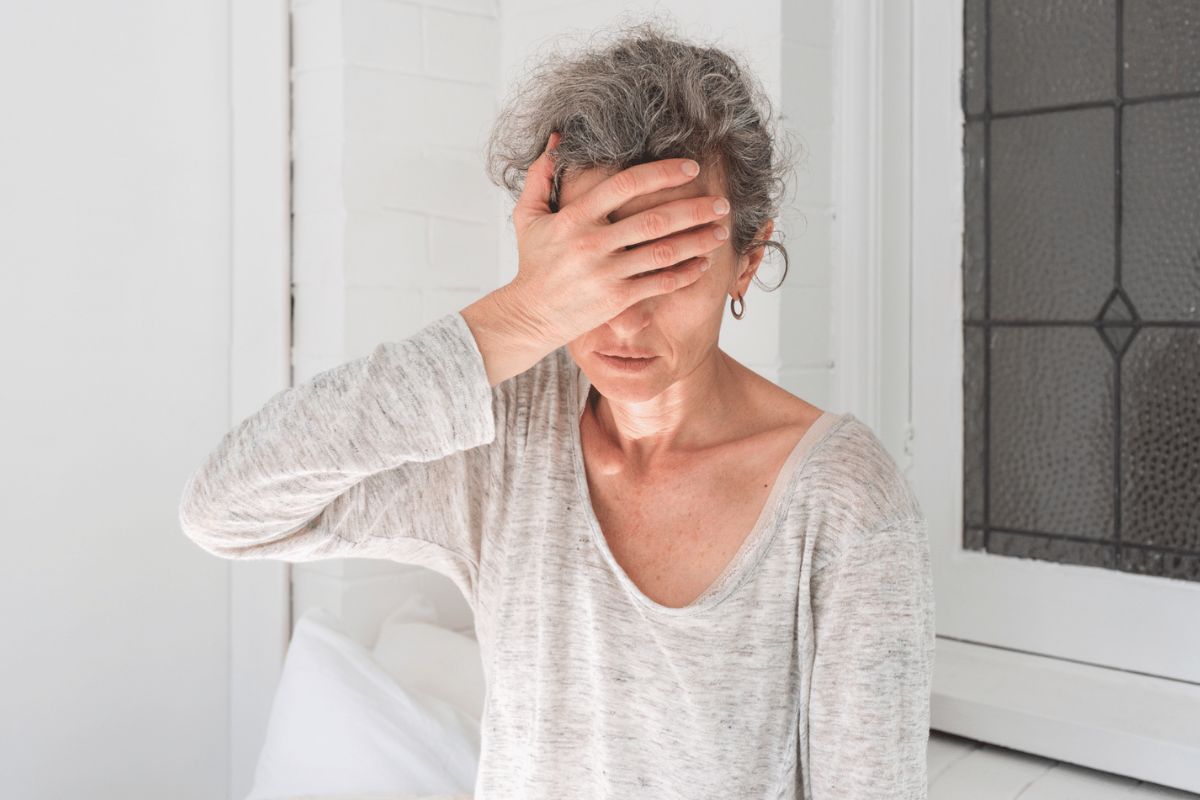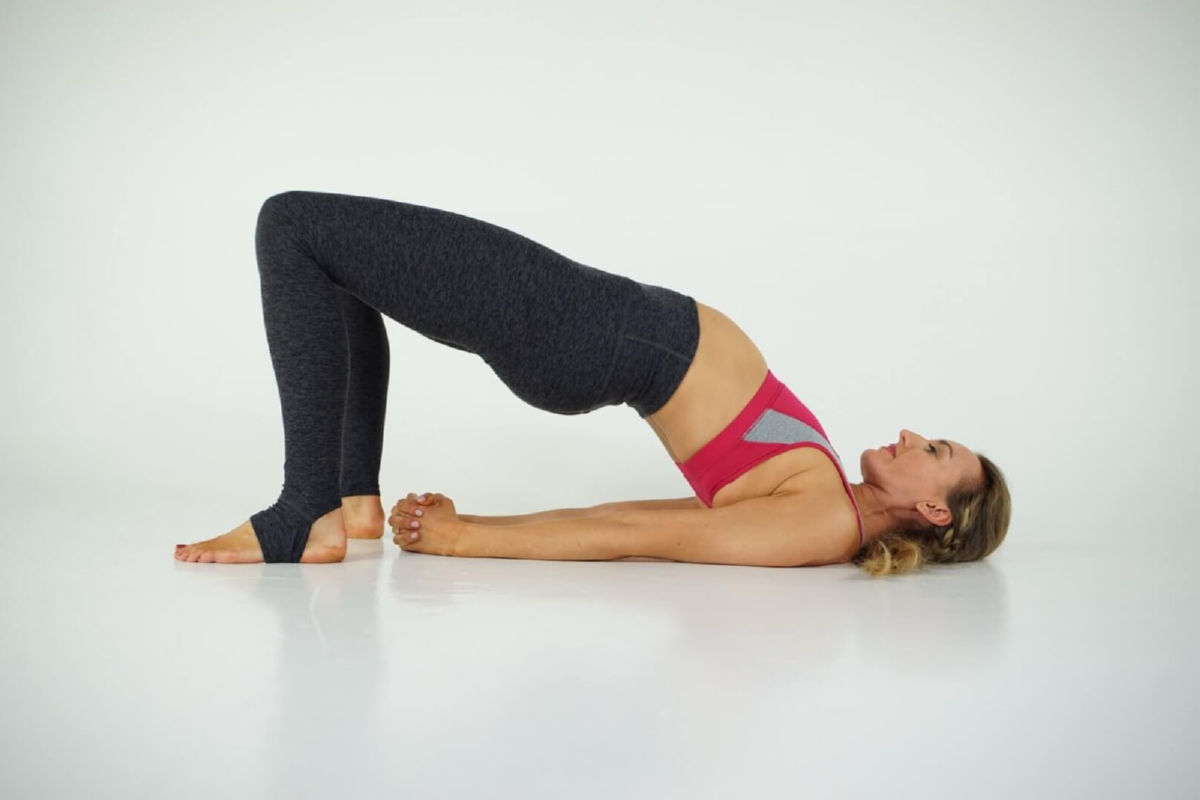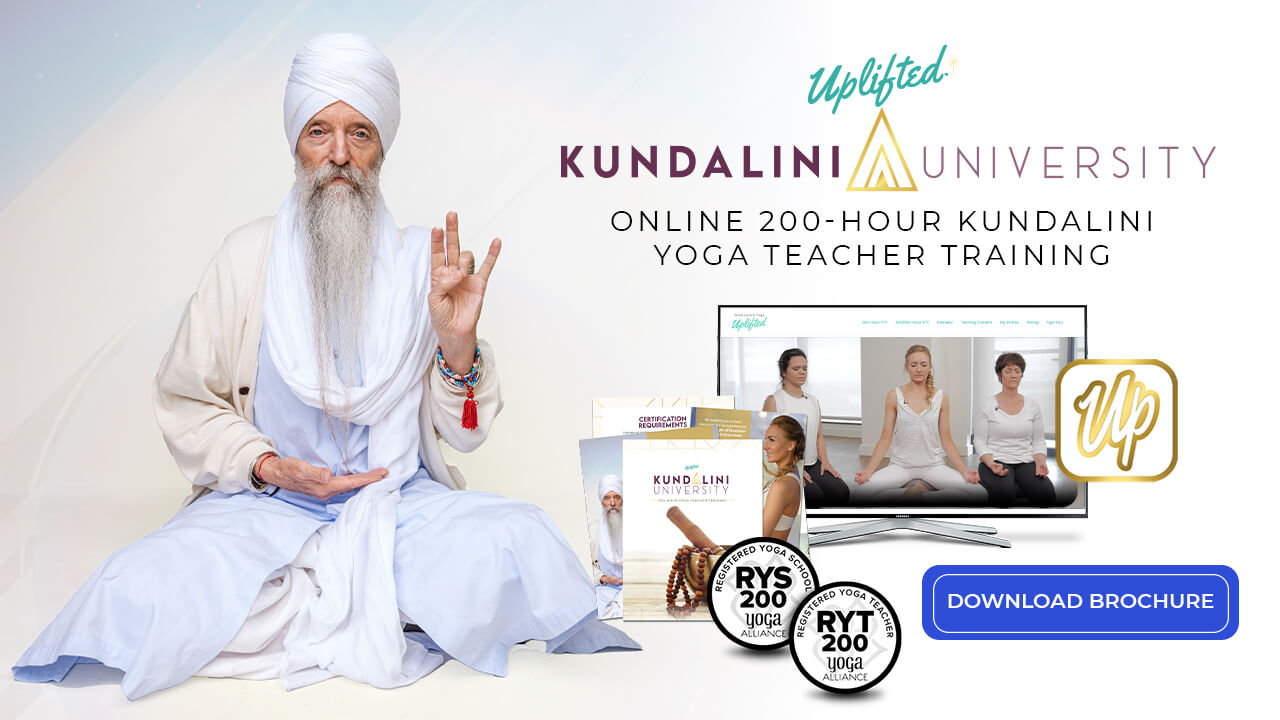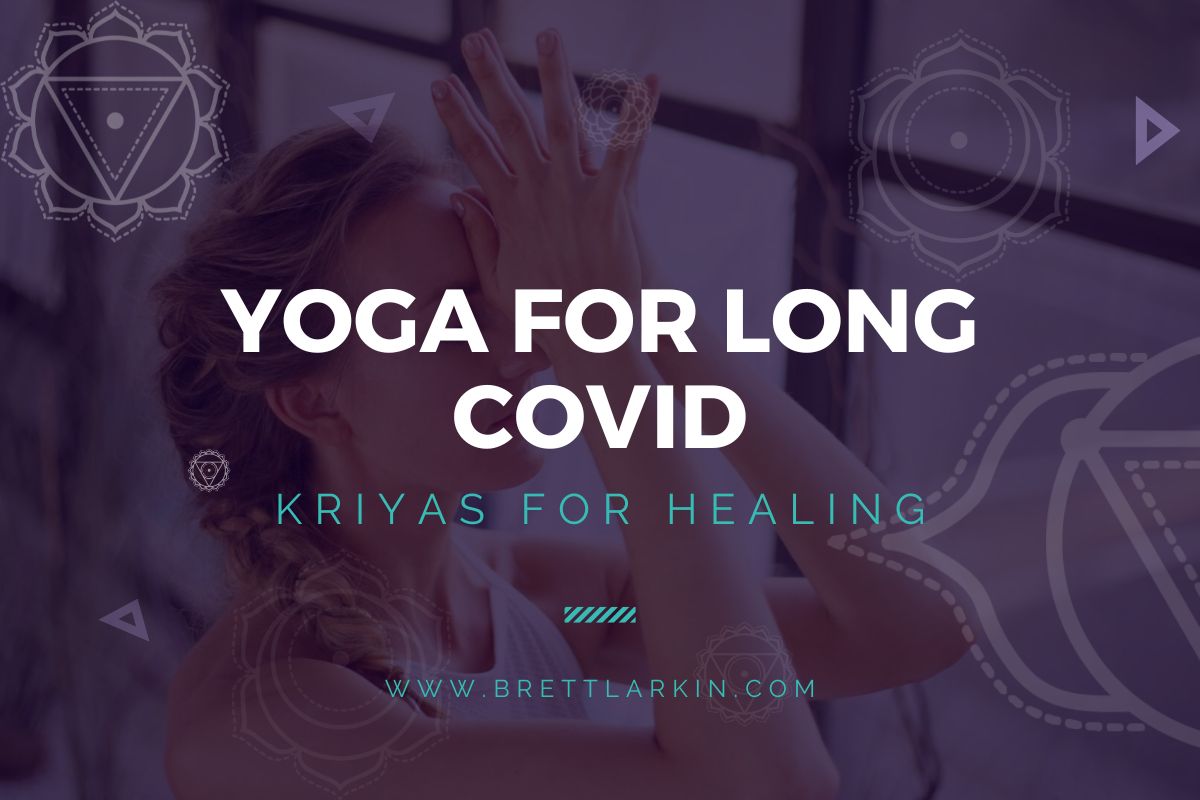
COVID SUCKS! There, I said it. Between the lockdowns and restrictions and actually getting the illness… it’s the worst! Add in that after you’ve actually had COVID you can retain symptoms for months or even years afterward (known as “long COVID” for symptoms lasting up to 3 months and/or “long haul COVID” for symptoms lasting longer), and you’re left feeling extra fatigue, stress, anxiety, and just like your overall health is terrible! Bleck.
BUT! Practicing yoga can help you through this trying time and towards the path to healing.
COVID And Yoga
There is still so much to be studied and learned about coronavirus infections that it’s hard to know how it will affect you in the long run, or how long the recovery process will be. What is known is that the virus affects the entirety of the body, specifically the lungs, causing pneumonia and respiratory tract infections. This is especially dangerous for cancer patients, HIV patients, asthma patients, or patients with already compromised immunity. In a lot of patients, even those with mild symptoms, it can lead to acute respiratory distress syndrome and fibrosis tissue in the lungs, making it harder to absorb oxygen.
It has been discovered that the most common symptoms of long COVID patients are fatigue and dyspnoea (shortness of breath). Other symptoms of long COVID patients include: hair loss, headaches, smell and taste dysfunction, brain fog, cough, joint pain, and gastrointestinal and cardiac issues. Research is still being done, but it looks like a large number of people experience post-COVID or long COVID symptoms.
Yoga can help (even if you’ve never done yoga before). You don’t need to contort into a pretzel; just by incorporating yogic breathing and meditation, you can soothe your nervous system and reduce stress and anxiety about the future. Because one of the hardest things with long COVID is wondering, “When will it be over? When will my life go back to normal?”
Keep in mind too it’s not all just about physical yoga poses; In an article from the j altern complement med, ayurvedic and yogic practices could be beneficial not only in building immunity and preventative measures, but also in the recovery process of COVID patients.
How To Practice Yoga For COVID Recovery
Disclaimer: At Uplifted Yoga and Kundalini University we make no medical claims or advice. COVID patients should seek treatment through their primary care or family medicine. If you think you or one of your family members may have COVID or are experiencing long COVID symptoms, contact your physician.
That said, a yoga practice is a great add on to your primary care therapy for something like long COVID — it is a great complementary therapy.
If you’re wondering how to use yoga for long COVID recovery, let me list the ways!
Use yoga to gain greater awareness:
- Yoga practices stimulate, propagate, and sustain greater awareness. As such, this awareness assists in making wiser choices. Yoga and Meditation are not medical protocols. They result in awareness that can inspire healthier choices. When you combine these healthier choices with proper medical care and advice from qualified medical practitioners, you receive the benefits of both quality medicine and awareness.
- Nurturing greater awareness also leads you to notice your symptoms better. (Use a journal on how you feel each day to track patterns!)
Use yoga to get disciplined about your breathing: – even if it’s hard, every little bit counts!
- Yoga inspires discipline. Yoga practices like a 40-day kriya help you to do a breathing exercise and gentle physical movements that keep you on track for your recovery process.
- In addition, discipline is valuable when following any properly prescribed medical protocol. Following the advice of your primary care physician or medical doctors, combined with the discipline of a daily Yoga and Meditation, makes for healthier living.
Yoga is designed to expand breath capacity:
- Yoga is focused on the breath and breath capacity, which makes it a great practice for those suffering with long covid.
- Yogis for millennia worked to extend their breath – and you can use these same techniques today.
- Try inhaling for a 3 count, pause, then exhale for 6 to practice expanding your breath capacity. This should be easeful. Any sharp, shooting pain, stop immediately.
Add a sound on the exhale, like “om” to extend it even further and bring some healing sounds to your practice.
Yoga can help deal with the anxiety and uncertainty of having long covid:
- Calm your mind and ease anxiety with mindful breathing.
- Use Sitali breath to cool the body and calm the mind.
- Alternate nostril breathing is great for recalibrating your nervous system.
I’ve written all about these techniques so you can go deeper here!
Yoga For COVID: 3 Postures For Healing
Some things to keep in mind when practicing yoga for long COVID:
- Kriyas (yoga routines) and meditations that best suit long covid are routines that are less strenuous and more focused on opening up the nervous system and the autoimmune system through stimulation of the chakras, glands, and organs.
- Make sure you are receiving more in return than you are putting into your kriyas. Be very gentle on yourself and adapt the postures needed. Honor your limitations. It doesn’t mean you are weak or less than; it’s a form of strength to honor your body.
- Consistency is essential. Doing less in each moment and establishing a routine that is repeated will be the best way of achieving a positive outcome.
Here are three specific poses to get you started with this process and some helpful tips if you are a yoga instructor:
1. Gentle Moving Bridge (Setu Bandha Sarvangasana)
- Step 1: Start lying on your back. Bring the soles of your feet hip-width apart flat on the mat, ankles under knees. Keep your arms by your sides.
- Step 2: Breathe in as you squeeze through the glutes to lift the hips up. Keep the shoulders glued to the mat.
- Step 3: Instead of pulling the shoulders together, exercise to move with the breath. Exhale, scoop the pelvis up, and lower one vertebra at a time. Inhale lift the hips back up. Do this for several rounds of breath.
- Step 4: When you are ready to come out slowly release the hands and exhale as you send the hips back to the ground.
Variations: You can always keep the hands alongside the body and press the palms into the floor or place a block under the hips for extra support.
Benefits: Bridge stretches the front body gently and opens the heart and lungs, strengthens the back body, and releases tension.
Pro Tips for Yoga Teachers:
- Be more specific in your cues here. Instead of saying “engage the belly” try “pull your pelvic floor up and in as you feel your midsection tighten like a corset.”
- Reminder: restorative bridge with a block under the sacrum resets the nervous system and lets students really tune into their bodies and breath. This does not always need to be an active posture.
2. Supine Twist (Supta Matsyendrasana)
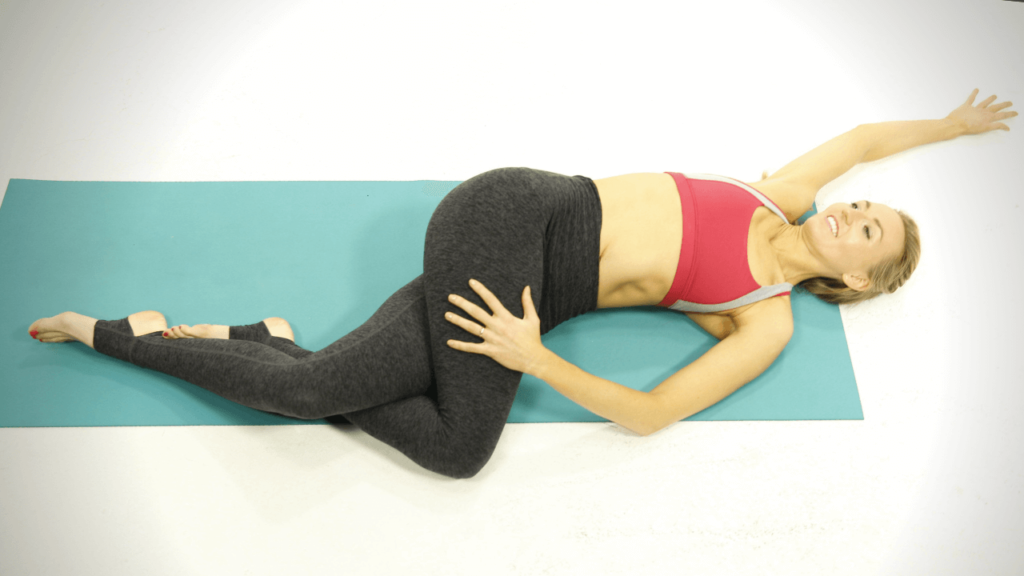
- Step 1: Lay flat on your back. Pull your right leg into your chest. Breathe in.
- Step 2: As you breathe out, gently let the knee cross the body and float to the ground on the opposite side.
- Step 3: You can gently place the opposite hand of the leg onto the knee, keeping the shoulders on the mat and the other arm extended to the side. Deep breaths.
- Step 4: Inhale as you untwist the body, and hug that knee back to the chest.
- Step 5: Exhale and release the leg long laying back completely flat.
- Step 6: Repeat with the left knee.
Variations: Place a block or pillow under the knee if it doesn’t meet the ground. Play with the position of your arm to see what is most comfortable. Or if you don’t like having one leg extended you can always bring the knees together and twist them both to one side, then the other.
Benefits: Twists help with stagnant energy in the body. These yoga poses will increase blood flow in addition to stretching the abdominal muscles, hip, and spinal muscles.
Pro Tips for Yoga Teachers:
- Make this a really beautiful exercise that syncs breaths and movement by sliding the extended arm slowly up above the head, across the face, and back down again, as if you were making a snow angel. Have students send their breath through the breath as their arms move.
- If with a private client or small group: place a support cushion between or under the bent knees and add an arm pull assist (I teach this and other myofascial hands-on assists in 300-Hour Yoga Teacher Training). It will make your student feel amazing and well-cared for.
3. Standing Forward Fold (Uttanasana)
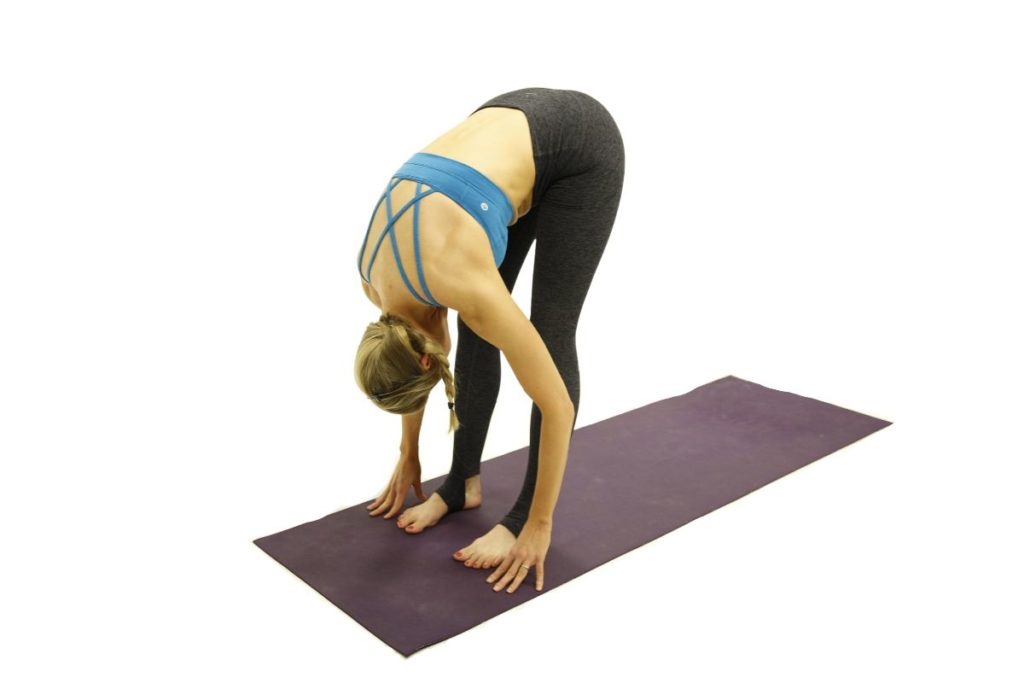
- Step 1: From a standing position, feet hip-width apart, inhale as the arms sweep up overhead.
- Step 2: Exhale, with a slight bend in the knees, hinge forward at the hips letting the arms float down to the floor, torso folds.
- Step 3: Let gravity have your head but not your shoulders. Stay here for several breaths.
- Step 4: To come out, inhale, bend the knees, and sweep the arms up to standing. Exhale as the arms return down to your sides.
Option to add in undulations: Slowly roll up one vertebra at a time, round through the low back, mid back, then upper back. Head is the last thing to come up. Take the feet out a bit wider. Present the heart to the ceiling and roll the chest forward and lead with it as you fold back down in a fluid motion. Roll back up and repeat for several rounds. NOTE: Use the hands to support you by keeping them on the thighs or tops of the knees.
Variations: You don’t have to have straight legs. Bend the knees deeply or take the feet wider. Place the hands on blocks, clasp opposite elbows to hang, or use a chair or table to assist you by placing the hands on one and only coming halfway down.
Benefits: This is a mild inversion, slows the heart rate, increases blood circulation, lowers blood pressure, and helps to ease headaches and pain in the backside of the body.
Pro Tips for Yoga Teachers:
- Do spinal rolls: let students do a big loud releasing breath as they come back down into Uttanasana to encourage release. Give extra love to the spine and make it a breathing exercise.
- If your student is dealing with long COVID and dizziness/lightheadedness, or balance issues is one of their symptoms, take this to the ground. Do seated forward fold instead of standing. Make it restorative.
Recommended COVID Meditation Practice
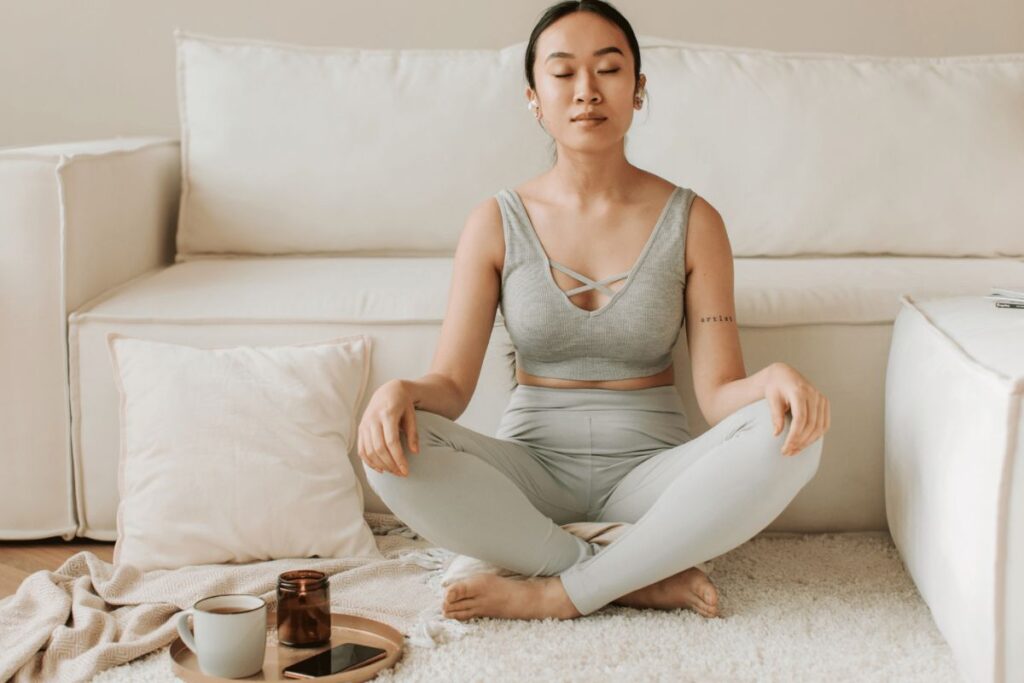
Meditation practices are great tools to add to your COVID healing journey. Any yogic breathing meditation is wonderful, in particular, Kirtan Krya. This breathing exercise helps expand the breath and support healing in the lungs.
For a breathing meditation to increase the strength of your lungs, try this 10-minute Kundalini breathing meditation… for FREE!
Kirtan Krya is going to strengthen courage by clearing your subconscious. According to yogis who regularly practice it (including myself), Kirtan Kriya is a yoga and meditation practice that stimulates all the senses and the areas of the brain that control them. This enhances brain function (helping with that pesky symptom of brain fog) and helps control mental stress or depression. You can learn more about Kirtan Kriya in this blog post.
Meditation Tips:
- Be patient with yourself. It’s normal for the mind to wander. The goal is to practice bringing your mind back to focus.
- Get as comfortable as possible. Sit on a cushion or with your back against the wall to keep a tall spine. Or even try lying down on the floor. Support your body as best you can.
- Put your palms wherever they feel best. You don’t have to do anything special with your hands, they can just rest on your thighs.
- Put on some soft music and dim the lights.
Prayer work is also important to maintain a healing attitude when the body is challenged. No matter your religious affiliation, connecting with your higher power brings hope, healing, and love to the body and soul. Try these affirmations for the heart chakra to open yourself to receive this loving and healing energy.
Your body is designed beautifully and can heal; just be patient with yourself, consistent in your efforts, and keep breathing.
Above all else, stay in constant contact with your medical team and report your results to them so that they can advise you further and more accurately by being more informed.
Next Steps
- Love Kundalini? Refine your tune in (the Adi Mantra) with me in this free chanting masterclass.
- Experience my Kundalini Dance Party and elevate your mood in 8 minutes.
- Enroll in my Kundalini Demystified training course. Let’s demystify the “mystery” of this ancient science and INSTANTLY reap the benefits!
Get 3 Free Training Vidoes from our Kundalini University Experience & Certification Program
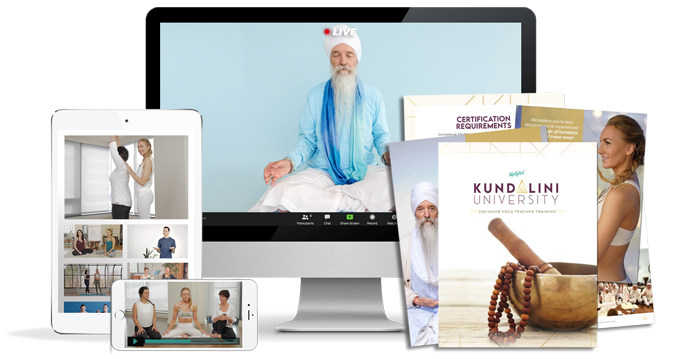
YOU MIGHT ALSO LIKE
- Trauma-Informed Kundalini Yoga: A Heart-Centered Approach to Healing
- Harnessing the Power of Kundalini Divine Feminine for Transformation
- Kundalini for Feminine Energy: Ignite Your Creative Power and Passion
- Mastering the Sufi Grind: Benefits and Techniques for All Levels
- Kundalini Yoga for Chakras: An Uplifted Guide to Energy Balance
- Discover the Benefits of the Gobinday Mukunday Mantra for Well-Being
- Nabhi Kriya: Ignite Your Inner Fire and Personal Power
- Ek Ong Kar Sat Gur Prasad: Kundalini Mantra For Manifestation
- Tantric Har Chant: How It Fuels Prosperity and Inner Power
- Powerful Mantra for Protection Against Negative Energy and Harm
- The Power of Humee Hum Brahm Hum Mantra for Connection and Healing
- The Sa Re Sa Sa Mantra: Connecting Breath, Light, and Creativity
- What Is The Ajai Alai Mantra In Kundalini Yoga?
- What Is Sat Nam Rasayan? How And When To Practice
- The Meaning Of Ang Sang Wahe Guru Mantra in Kundalini Yoga

